Okonomiyaki: The Difference Between Osaka and Hiroshima style
Okonomiyaki. Handily this dish is of the most instantly recognized soul foods of Osaka. During lunch, it is not uncommon to find long lines outside of okonomiyaki restaurants. At festivals, you can be sure to find plenty of happy mouths gobbling up a hand-held version. But the most likely place you will find Osakans eating them is at home. With a longer history than you might expect, okonomiyaki is without question something everyone in Osaka (and the Kansai region for that matter) truly enjoy.
The History of Okonomiyaki
As is the case with many foods, pinpointing the exact origins of okonomiyaki is a tricky matter. Still, there are two common stories as to how this dish came about.
The first goes back to the later 16th century when the tea master Sen no Rikyu made a sweet called fu no yaki. It is not clear how exactly this sweet confection is related to okonomiyaki; However, the one thing in common is that flour is the key ingredient. At the time, cooking with wheat-based flour was a pretty novel thing in Japan. As such, it is likely that konamon cuisine (flour-based cuisine) can trace its origins back to this specific time.
A more plausible explanation as for the origins of okonomiyaki is likely monjyayaki. Commonly eaten in Tokyo in the 20th century, monjyayaki is very comparable to okonomiyaki. However, monjyayaki contains much more moisture and is therefore much runnier.
People traveling to Tokyo reduced the water content so that they could bring it back home. This dish, dondonyaki, became very popular in Osaka, where it was often topped with Worcestershire sauce. It is very likely this dish later become okonomiyaki in Osaka.

Of course, some things have changed. For example, instead of Worcestershire sauce, people often slather on a healthy layer of a sweet tangy barbeque-like sauce, mayonnaise, and top everything with seaweed and bonito flakes. The ingredients have also become more varied and complex in flavor.
As its name “okonomi (lit. as you like)”suggests, you can customize it by putting your favorite ingredients such as seafood, mochi, or even cheese.
Kansai-style vs Hiroshima-style
Osaka is very popular for its okonomiyaki– but so is Hiroshima. While all the Kansai version is simply okonomiyaki, in Hiroshima it is hiroshimayaki.
Though both versions might look the same at first, there are significant differences between the two. For the Kansai-style, people mix cabbage and the other ingredients directly with batter, but people in Hiroshima cook the batter first and then put the ingredients on top of the batter. They also fry an egg on top of it too.
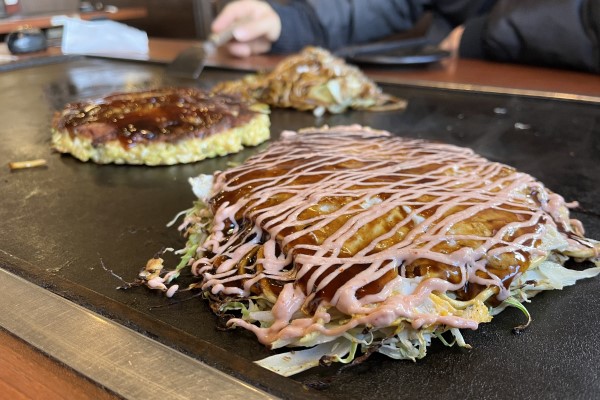
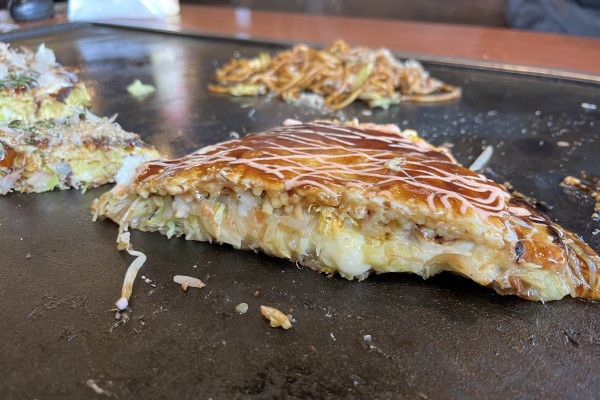
Of course, both Hiroshima-style and Kansai-style okonomiyaki come with sauce, mayonnaise, seaweed, and bonito flakes.
Eating Okonomiyaki
Although Osaka is famous for okonomiyaki, there are actually more okonomiyaki restaurants in Hiroshima! However, this does not mean Osakans do not like okonomiyaki. It just means that people usually prefer to eat okonomiyaki at home.
When they -do- decide to go out for them, the unspoken rule is each person should order their own.
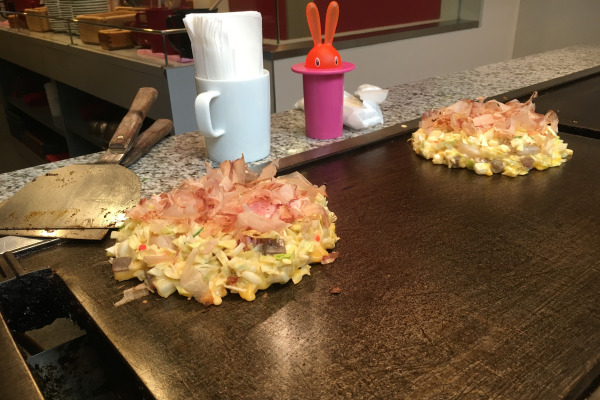
In many restaurants, there is a hot plate at each table and the wait staff will cook okonomiyaki in front of you. It typically takes about 10 minutes or so to cook. You might get worried if it is burned or not, but it’s fine. Just enjoy talking while you wait.
At some point, these massive pancakes need to be flipped. They are often so big and dense that you might find yourself holding your breath before you do it. But if you don’t feel confident enough to do it, just let the restaurant’s chef do that for you.
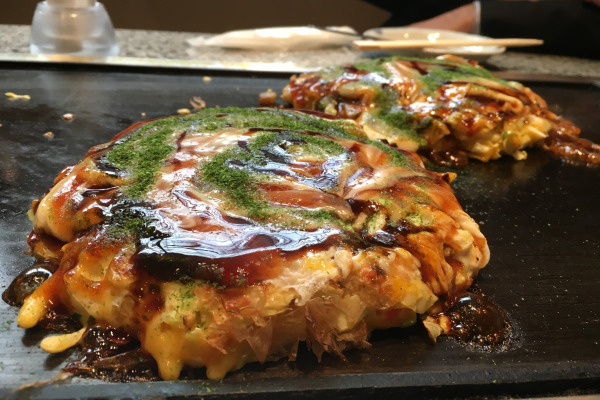
In Osaka, don’t worry about trying to get the whole thing on your plate. Rather you eat yours from the hot plate directly so it won’t get cold. Also when eating, people often use a small spatula, not chopsticks. Some people prefer to use chopsticks but I think many Osaka local people prefer to use small spatulas called hera. I also personally prefer to eat them with hera, because it is easier to cut off small bites and eat them right away than need to switch to another utensil.

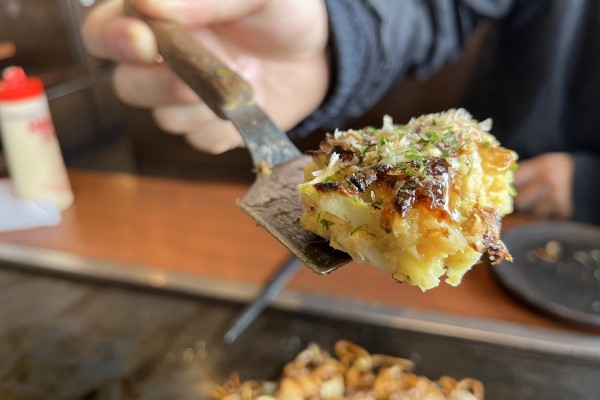
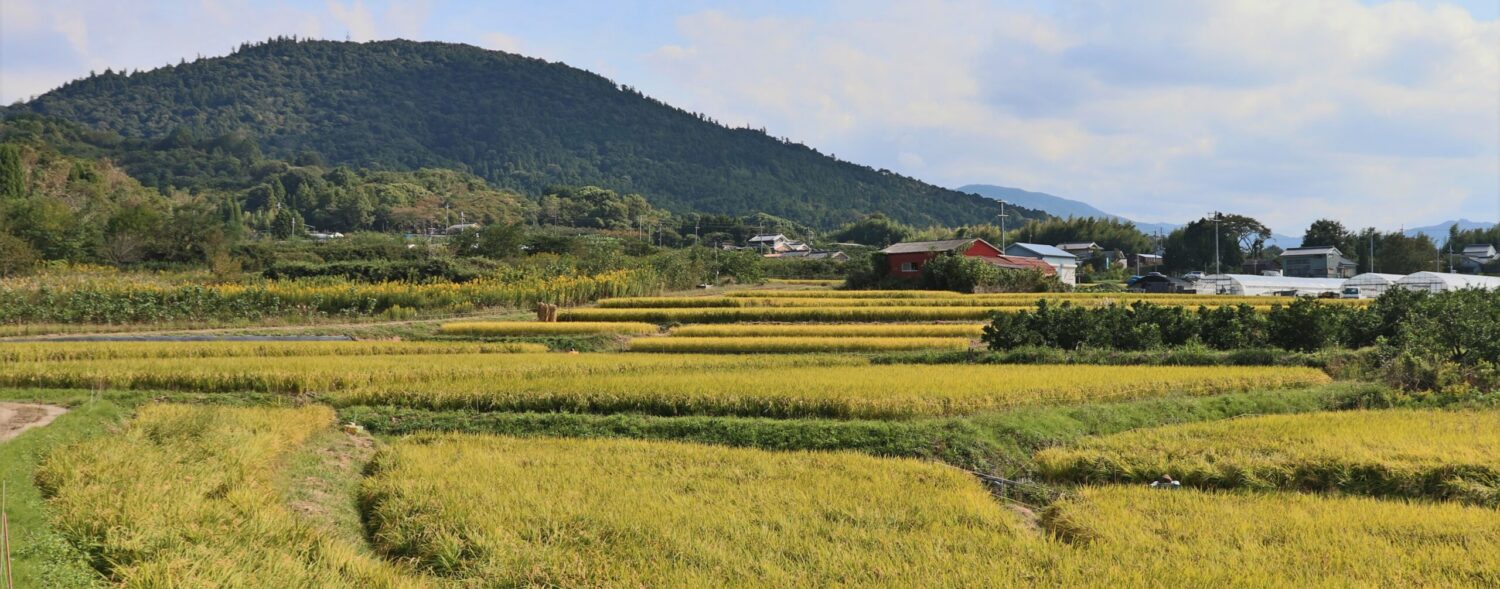
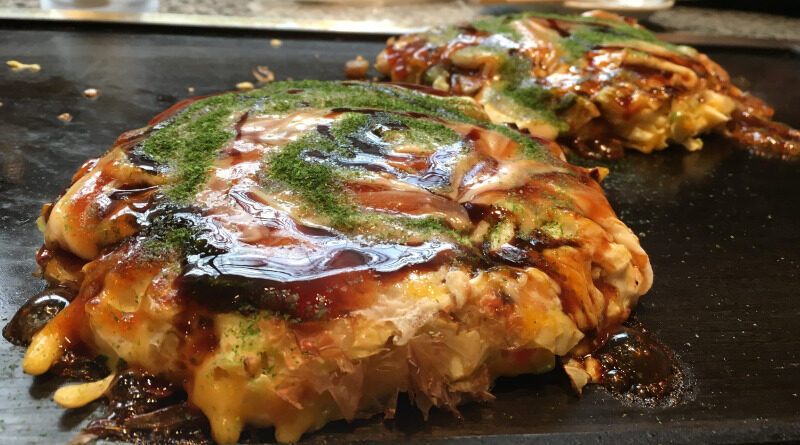
Leave a Reply